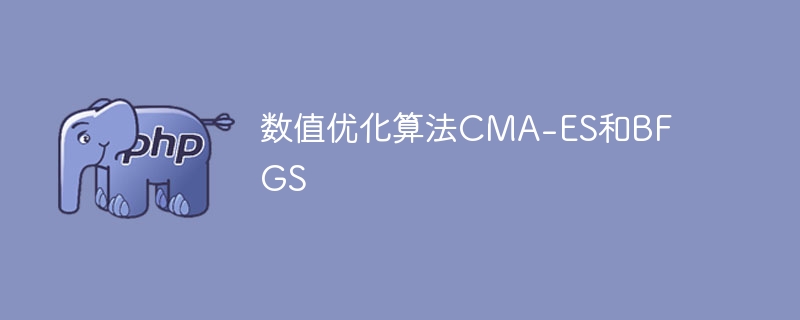

The core task of machine learning is to find the optimal value of a set of parameters to minimize the cost function or maximize the reward function. To achieve this goal, optimization algorithms are usually used, of which CMA-ES and BFGS are the two mainstream methods. CMA-ES is an evolutionary strategy algorithm that finds the optimal solution by evolving parameters generation by generation. The BFGS algorithm is a gradient-based optimization algorithm that finds the optimal solution by iteratively approximating the Hessian matrix of the objective function. Both algorithms have shown good performance and effects in different scenarios
Next, let’s take a look at the optimization algorithm. Gradient-based optimization algorithms use the gradient of the cost function to adjust the parameters of the model. The gradient is basically a vector of partial derivatives of the cost function with respect to each parameter. By observing the gradient, we can understand in which direction the cost function changes, and how fast it changes. This information is very important for adjusting model parameters, because we hope to find the minimum point of the cost function to obtain optimal model parameters. Therefore, the gradient-based optimization algorithm is a very important algorithm in machine learning.
A common gradient-based optimization algorithm is gradient descent. In this method, the algorithm fine-tunes the parameters according to the direction of the negative gradient in order to move toward the smallest cost function. The learning rate is used to control the step size, which reflects how much the algorithm trusts the gradient.
There are variations of gradient descent, such as stochastic gradient descent (SGD) and mini-batch gradient descent. They use random sampling to estimate gradients and are suitable for high-dimensional functions.
CMA-ES is a stochastic optimization algorithm based on evolutionary strategies. It is characterized by not being limited to a single solution but by candidate solutions that evolve over time. The algorithm estimates the gradient of the cost function through the covariance matrix and uses these correlations to generate new candidate solutions in the hope of finding the best solution. The advantage of CMA-ES is that it can quickly converge to the global optimal solution, which is especially suitable for high-dimensional optimization problems. Through continuous iteration and evolution, CMA-ES is able to find optimal solutions to effectively solve practical problems.
BFGS is a deterministic optimization algorithm used to approximately update the value of the Hessian matrix. The Hessian matrix is the second-order partial derivative matrix of the cost function with respect to the parameters. BFGS performs well in optimizing smooth functions with fewer parameters.
In general, CMA-ES and BFGS are commonly used numerical optimization algorithms that use approximate gradients or Hessian matrices to guide the search for the minimum or maximum value of the cost function. These algorithms are widely used in machine learning and other fields to train models and optimize objective functions. Their use can improve the efficiency and accuracy of optimization.
The above is the detailed content of CMA-ES and BFGS: Comparison of Numerical Optimization Algorithms. For more information, please follow other related articles on the PHP Chinese website!
 windows10 installation failed
windows10 installation failed
 How to set linux environment variables
How to set linux environment variables
 How to leave two spaces empty in a paragraph in html
How to leave two spaces empty in a paragraph in html
 There is no network adapter in device manager
There is no network adapter in device manager
 Laptop sound card driver
Laptop sound card driver
 Detailed explanation of onbeforeunload event
Detailed explanation of onbeforeunload event
 What are the commonly used shortcut keys in WPS?
What are the commonly used shortcut keys in WPS?
 How to set automatic line wrapping in word
How to set automatic line wrapping in word




